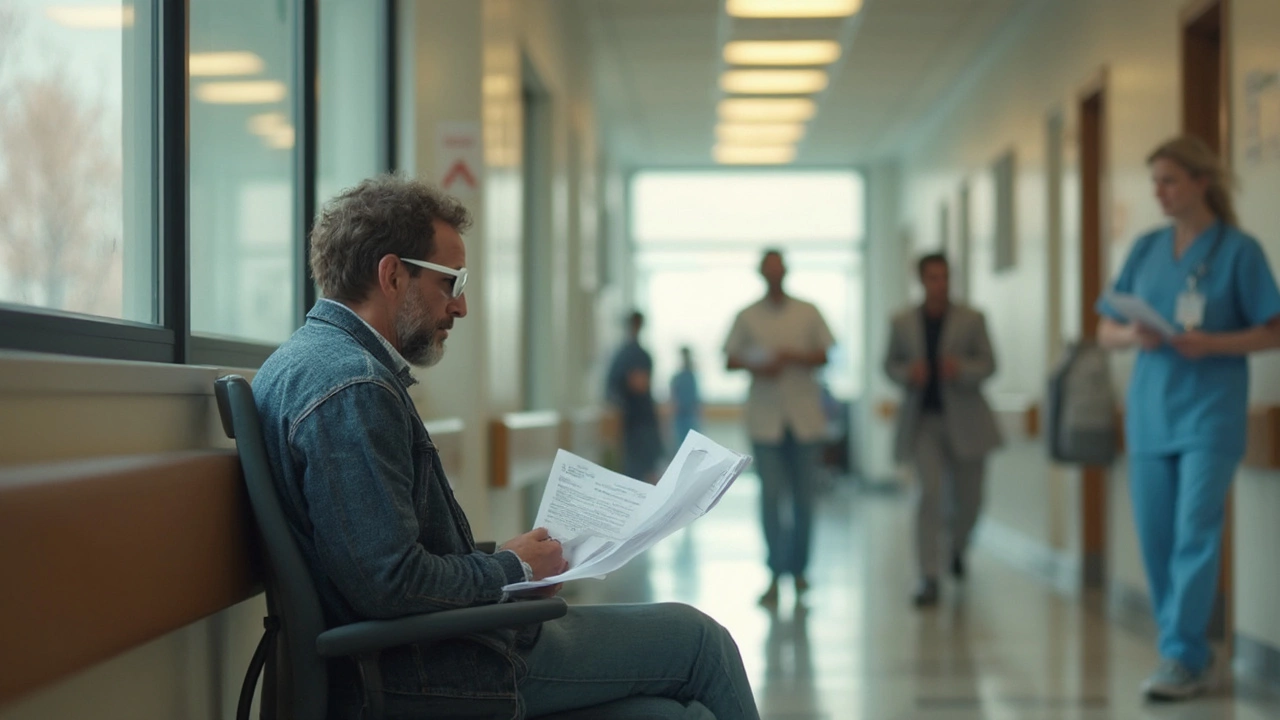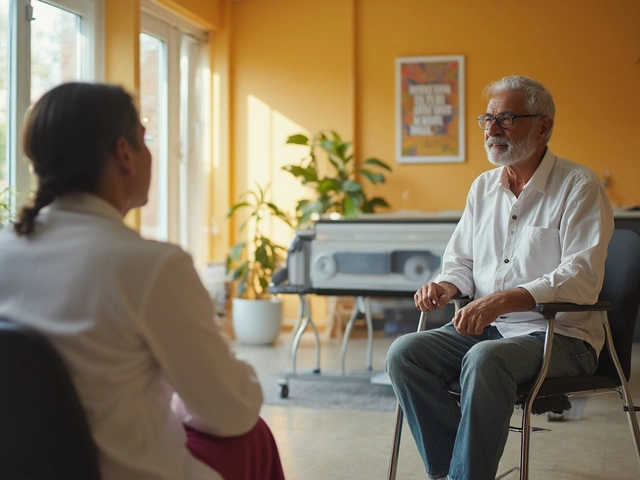Your flight lands in Paris and you’re ready for croissants and the Eiffel Tower. Then, out of nowhere, you twist your ankle on a cobblestone or get a nasty fever. Here’s the million-dollar question: what actually happens if you—an American—end up in a European hospital?
No, you don’t need to panic or expect to see a $10,000 bill on your way out. Unlike the U.S., hospitals in Europe don’t turn you away if you need real help, regardless of your passport. Emergency care is available, and the process works differently from what you’re used to at home.
Before your trip, did you even check if your insurance works in Europe? Most Americans forget, and that can mean big headaches when someone like my son Aarav spikes a fever abroad. It’s not just about getting treatment; it’s the nitty-gritty details—what documents you’ll need, how they handle your info, and if you’ll have to pay up-front. Forget glossy travel guides. Let’s talk about how things actually play out in the ER.
- How European Hospitals Handle Foreigners
- Paperwork and What You’ll Need
- The Money Question: How Much Will You Pay?
- Savvy Tips for Americans Needing Hospital Care in Europe
How European Hospitals Handle Foreigners
Walking into a hospital in Europe as an American is a whole different experience from what you’d expect back home. If it’s a real emergency—heart attack, broken bone, sudden illness—the ER staff won’t worry about your nationality first. They’ll treat first, ask questions later. European countries have laws requiring hospitals to provide essential medical care to everyone, including tourists. They don’t check your ability to pay up front in emergency rooms.
But after you’re stable, things change a bit. They’ll ask for your passport next. Some countries, like Germany and France, might check whether you hold private travel insurance or something like the European Health Insurance Card (which Americans don’t have, unless you’re also an EU resident). Don't expect the red carpet, but you don’t have to sweat about being left untreated either.
Here’s what usually happens for Americans:
- They admit you and focus on your urgent medical problem first.
- The admin staff will eventually ask for ID and insurance info. If you have travel insurance, hand them those details.
- If you don’t have travel insurance, you’ll likely be considered a private patient. That just means you get billed later—no instant payments demanded in the middle of a crisis.
- Doctors and nurses speak English in many major European hospitals, especially in tourist-friendly cities. But paperwork and technical words might still need Google Translate or a little patience.
- Ambulance service isn’t always free for foreigners—even when the ER visit is, you could be charged separately for that ride.
The American hospital Europe experience almost always means far less financial stress compared to the U.S.—yet, every country has its quirks. Some nations send you the bill right away, some months later. Either way, you get treated like any other human being, not a problem to be solved at the reception desk.
Paperwork and What You’ll Need
Forget about waltzing into a European hospital and getting treated like it’s a hotel check-in. If you’re an American needing care, expect to flash some paperwork—Europeans love their forms and ID checks.
First, hospitals will always ask for your passport. It’s their main way to confirm who you are and that you’re not ducking the bill. Sometimes a copy of your airline ticket is handy, especially if they want proof you’re just visiting and not secretly living there.
Insurance is the next biggie. If you’ve got travel medical insurance (yes, think about buying it), have your policy number and insurer’s details ready. European hospitals don’t usually accept American health insurance like Blue Cross Blue Shield, but they will sometimes work with big travel insurance brands or expect you to pay and claim later. If you show up with just your U.S. insurance card, you’ll probably get a polite shrug and a bill anyway.
- American hospital Europe paperwork is pretty basic: passport, proof of insurance, and printed copies of those—at least two each, in case there’s a language mix-up.
- If you have a European Health Insurance Card (unlikely if you’re not living there), it can save huge headaches, but Americans rarely have this.
- If your health goes sideways, also have a contact number for someone back home, in case doctors need more info or you hit a language barrier.
| Document | Why It’s Needed | Extra Tips |
|---|---|---|
| Passport | Verify identity and travel status | Keep a digital backup on your phone |
| Travel Insurance Policy | For billing and reimbursement | Have insurer’s 24/7 hotline handy |
| Proof of Travel (plane ticket) | Sometimes asked to prove tourist status | Printed or digital copies are fine |
| U.S. Insurance Card | Rarely accepted, but worth showing | Snap a photo just in case |
If you don’t have insurance, they’ll usually make you pay a deposit or the full amount before letting you leave. Some clinics might ask you to pay everything up front—even if you’re mid-fever and look like you just fought a lion.
Here’s a hot tip: snap pictures of your key documents and store them in your phone or cloud. Lost your stuff in a pickpocket’s hands? You’ll still have proof at check-in.

The Money Question: How Much Will You Pay?
This one grabs everyone’s attention—are European hospitals going to wipe out your savings or is care actually affordable? Here’s the real deal: The cost of hospital care in Europe is usually way less than what you’d face back home in the States. But the price tag depends on where you are, the hospital, and whether you have insurance that works in Europe.
If you wander into an emergency room in France, Germany, or Spain, they’ll treat you, citizen or not. But here’s the catch: you usually have to pay for care up front, unless your travel insurance has a deal with that hospital. Don’t expect free treatment just because you heard healthcare is cheap in Europe. It’s cheaper, yes, but not always free for tourists.
Here’s an example to help you see the difference:
| Country | ER Visit (No Insurance) | 1 Night Hospital Stay | Typical Prescription Cost |
|---|---|---|---|
| France | $60–$150 | $300–$800 | $10–$25 |
| Spain | $75–$200 | $250–$600 | $12–$30 |
| Germany | $80–$180 | $400–$900 | $20–$40 |
| USA | $600–$2,500 | $2,000–$5,000+ | $50–$120 |
The numbers speak for themselves. That ankle X-ray in Paris? Often less than $100. A couple of stitches for your kid? Around $150, sometimes less. If something serious happens, you might pay a few hundred to a thousand dollars, but that’s still nowhere near the five-figure bills you’d expect in the U.S.
Got travel insurance? Then things get better. Many travel insurance plans repay you for treatments or pay directly to the hospital if you call them right away. Some credit cards even have built-in coverage—check before your trip. Be ready with a credit card or cash, because most places want payment after treatment if you don’t show proof of coverage.
- Try to save every receipt from the hospital and pharmacy—you’ll need them to claim money back from insurance.
- If you have a European friend, they’ll pay far less (sometimes nothing), thanks to their country’s insurance. But tourists pay out of pocket, then fight with their own insurer back home.
- Every country has slightly different rules, so always check your travel insurance fine print and the hospitals in your destination.
No one wants to spend their vacation dollars on unexpected health drama. But if you do end up in a European hospital, at least the charges won’t knock you out the way they do back home.
Savvy Tips for Americans Needing Hospital Care in Europe
If you’re traveling in Europe, a hospital visit can feel like getting thrown into the deep end. Don’t worry—a little prep and a few smart moves can really make a difference. Let’s break it all down so you’re not scrambling last minute.
- Travel insurance is a must. Most U.S. plans don’t cover international care. A decent travel insurance policy usually covers emergencies and some non-emergencies. Look for one with high enough limits to avoid surprises. Print your policy details or save the info on your phone.
- Bring your ID and passport. European hospitals will ask for these. They want to know who you are before they treat you. No ID? Expect longer wait times or extra paperwork.
- If you have a European Health Insurance Card (EHIC) or a Global Health Insurance Card (GHIC), bring it. Americans don’t get these by default, but if you have European citizenship or dual residency, these count. Otherwise, hospitals bill you as a private patient.
- Up-front payment is common. Many hospitals ask non-EU tourists to pay for services at the time of treatment. Keep a credit card handy—some French or German hospitals don’t bill overseas.
- Keep all your receipts and doctor’s notes. Your U.S. insurance (or travel policy) might reimburse you, but only if you have detailed paperwork.
- Learn a few medical words in the local language. Even just knowing how to say “pharmacy,” “emergency,” and “allergic” helps in a pinch.
Want to know how costs stack up in real life? Here’s a quick look at average ER visit charges for non-residents in major European countries:
| Country | Avg. ER Visit Cost (USD) |
|---|---|
| France | $120 - $250 |
| Germany | $170 - $400 |
| Italy | $70 - $200 |
| Spain | $100 - $220 |
Way less than what you’d pay in the States, but still, nobody likes a surprise bill. Most hospitals accept card payments, but smaller clinics may not. Always have a backup plan for payment, like a debit card or some cash.
If you take any medication, snap a photo of your prescriptions and generic drug names. Not every brand is available abroad, but doctors can help if they know your exact meds. Makes it a lot easier if you’re stuck without your usual pharmacy.
Finally, have your emergency contacts and your embassy’s phone number saved in your phone. It sounds dramatic, but embassies can help if things get complicated. Better to have it and not need it than the other way around.
Follow these practical steps and you’ll keep the stress low if you find yourself visiting a European healthcare facility on your trip.

 Why Is Therapy So Expensive? Unpacking the Real Costs
Why Is Therapy So Expensive? Unpacking the Real Costs
 Essential Tips for Post-Knee Replacement Bowel Movements
Essential Tips for Post-Knee Replacement Bowel Movements
 Using US Health Insurance Abroad: What You Need to Know
Using US Health Insurance Abroad: What You Need to Know
 Does Medicare Cover You If You Travel Overseas? Know Before You Go
Does Medicare Cover You If You Travel Overseas? Know Before You Go
 Can You Drive 2 Weeks After Knee Surgery? Here's What You Need to Know
Can You Drive 2 Weeks After Knee Surgery? Here's What You Need to Know